#hindeloopen
Photo

Folklore painting from Hindeloopen, the Netherlands
#bootsma#hindeloopen#the netherlands#folk art#folklore#fryslân#friesland#dutch art#farmcore#warmcore#cottagecore#grandmacore
873 notes
·
View notes
Photo
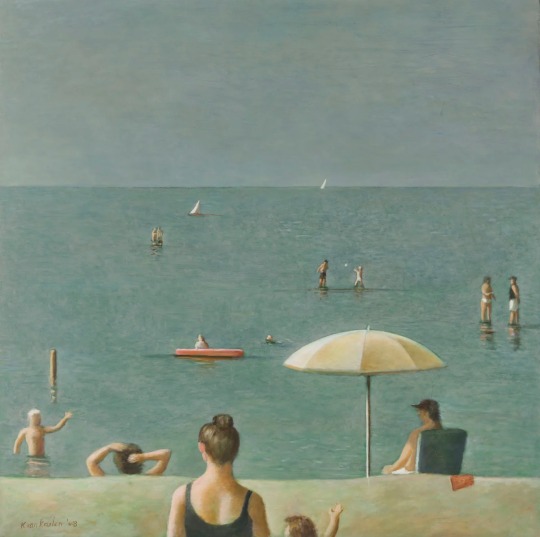
At Hindeloopen - Koos van Keulen, 2018.
Dutch, b. 1940 -
Oil on panel , 65 x 65 cm.
209 notes
·
View notes
Text
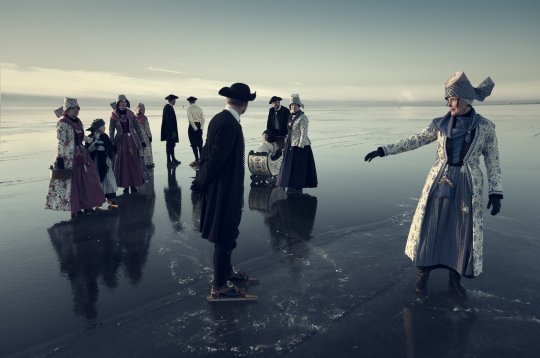
Hindeloopen, the Netherlands, streekdracht (traditional clothing)
📷: Jimmy Nelson, Between the sea and sky
#The Netherlands#Nederland#Holland#Hindeloopen#Friesland#dutch#culture#traditional clothes#traditional clothing
1 note
·
View note
Photo

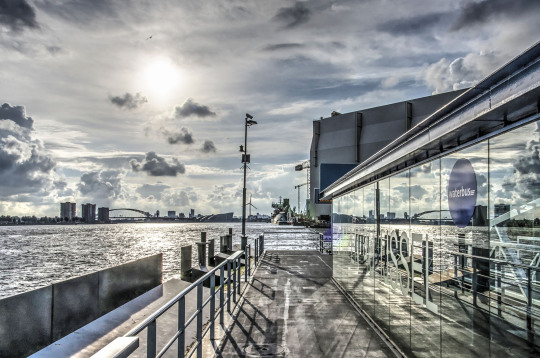


Some photos of harbours from the longlist that didn’t reach the top 10 of best photos over 2018. Click “keep reading” to discover the ones that made it...
https://www.3develop.nl/blog/countdown-the-ten-best-photos-of-2018/
0 notes
Link
★ Follow Stanley ter Haar ★ https://www.stanleyterhaar.com https://www.stanleyterhaar.nl
Facebook: https://www.facebook.com/StanleyterHaar/
FacebookPage: https://www.facebook.com/StanleyterHaarPagina FacebookGroup: https://www.facebook.com/groups/407676452767836
Youtube: https://www.youtube.com/channel/UC_8LGFHEIAmn66dpnxTI4YA/videos https://www.youtube.com/user/ICwebapp/videos
Twitter: https://twitter.com/StanleyterHaar linkedin: https://www.linkedin.com/in/stanley-ter-haar-3453882b/
Instagram: https://www.instagram.com/stanleyterhaarnl/
0 notes
Photo

Wentke (Gown)
Mid 18th Century
The Netherlands
Women in Hindeloopen, a town in the northern Netherlandish province of Friesland, traditionally wore this type of striking lightweight coat, called a wentke, on special occasions. Beginning in the mid-eighteenth century, wentkes were usually made of boldly patterned Indian chintzes, and contrary to the custom in the rest of Europe of confining chintz to casual and private occasions, residents of Hindeloopen elevated this exotic fabric to a formal status. The wentke was often worn with other garments of Indian cotton. (The MET)
Peabody Essex Museum (Object Number: 2012.22.15)
#wentke#gown#jacket#georgian#1730s#1740s#1750s#1760s#regional fashion#18th century#dutch#the netherlands#blue#cotton#india#chintz#peabody essex museum#popular
3K notes
·
View notes
Text
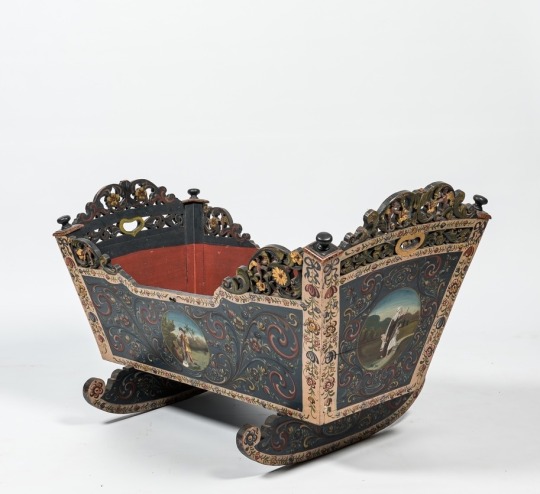
A polychrome wooden Hindeloopen cradle, ca. 1900
Rob Michiels
269 notes
·
View notes
Text


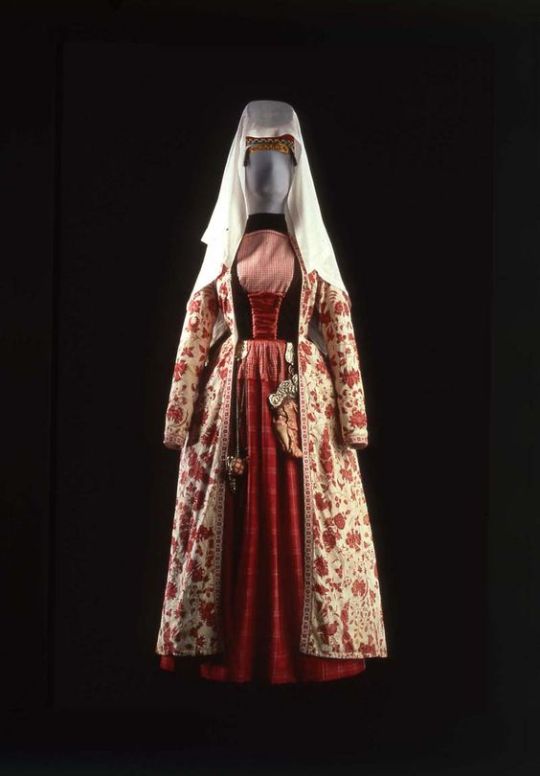
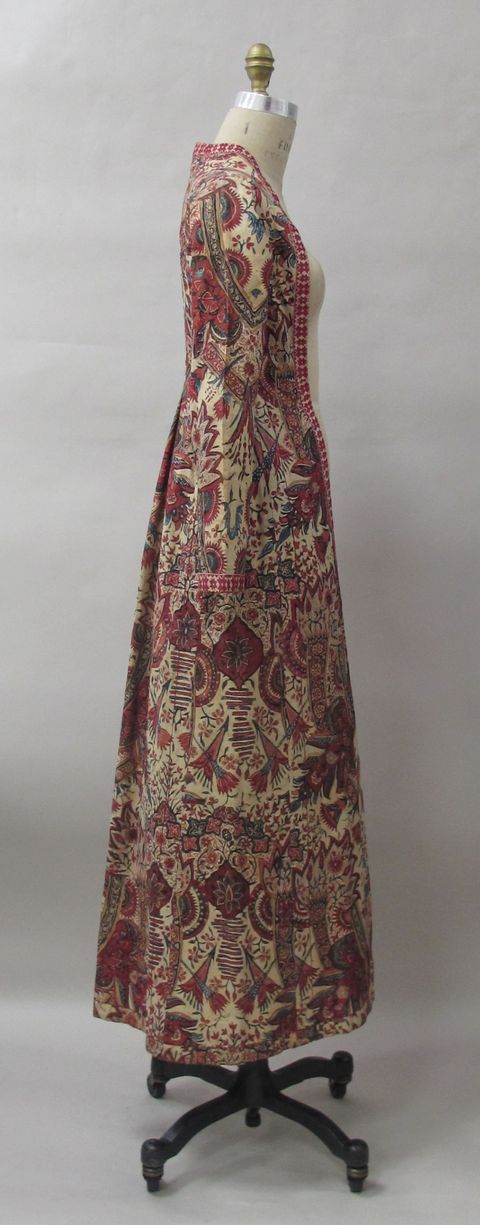

This full length coat style is referred to as a wentke. It comes from the Netherlands and was created in the mid 18th century. Originating in the province of Friesland, and in particular in the town of Hindeloopen, it was a type of closely fitted long coat worn over full length skirts with a blouse and stays.
The fashion began in the 1600s and continued through the 1700s into the early 1800s. Due to the huge amount of trade with the Eastern world that came through Amsterdam, a large number of these wentke were made up in imported printed Indian cotton fabrics like the example here.
This sample, now in the care of the MET is a brilliantly colored and complex pattern that is well matched at the center back. The coat cuffs and opening are edged with a red and cream linen trimming, and the wentke is lined in linen as well.
I’m including an image of a complete ensemble for reference.
97 notes
·
View notes
Text

10x7 Hand Painted Dutch Folk Art Serving Tray Hindeloopen Holland (50) ebay texasboxerlady
3 notes
·
View notes
Text
Untitled Wednesday Library Series, Part 82
This week: a diversion from typical format and focus, as well as answers promised explicitly to @shiny-good-rock and @sagehaubitze and implicitly to the rest of you. I’m going to allow myself one paragraph per thought cluster not as a challenge, but because I’ve been out in the heat and my brain is as an egg. Runny but denatured, like.
In 1927, some German guys under the banner of the Reichs-Ausschuß für Lieferbedingungen (that is, RAL, that is also National Committee for Delivery and Quality Assurance) established their own color space because that’s what such guys do. After some tinkering around with their system, out plonked (among other colors, because that’s what color spaces do) RAL 6011 (that is, Resedagrün, that is also reseda green) which after some stuff happened got used in a bunch of military applications and then some civilian ones. By the 80s RAL 6011 was the standard color for machine tools in continental Europe. Deckel, Schaublin, Opus, whatever. Still gets used a lot by certain kinds of machinist, restorers, hobbyists, and model makers. See below.
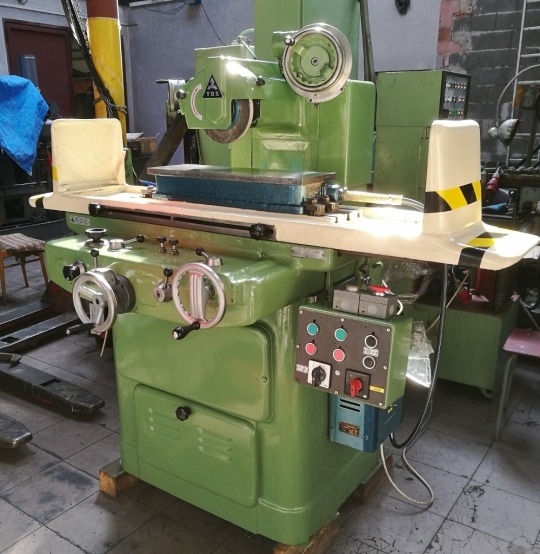
In the 1980s, my dad’s parents moved to the Netherlands after several decades living in places other than the Netherlands. My grandmother was not a creative or crafty woman except for occasional pattern sewing — she did not like to alter clothes, mind, just follow patterns — or, along the same vein, simple guided painting. Because she spent time around Hindeloopen and because she liked finding local furniture wherever they happened to live, she got reasonably into folk art. She got into it enough she started painting on her own — trays, mostly, but also small containers and the odd stool or book rack. I grew up with a weird amount of Hindelooper art. Poppies, dog roses, sometimes even birds. See below.
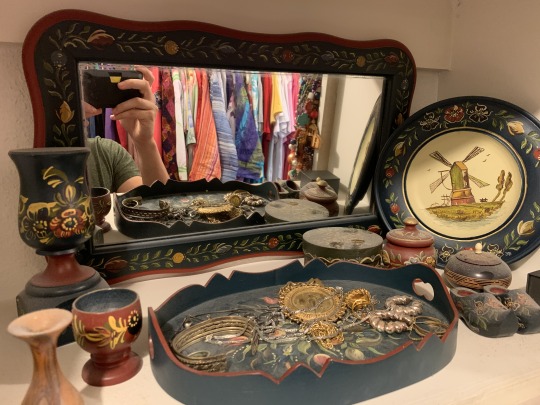
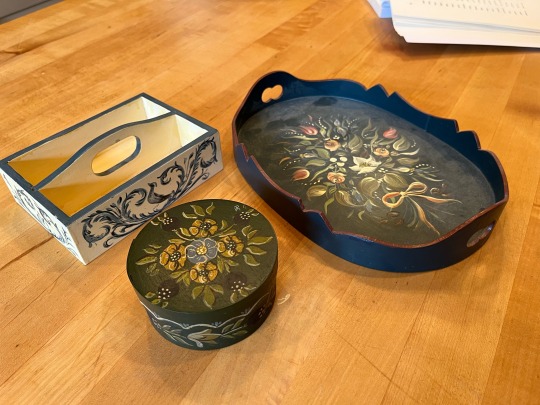
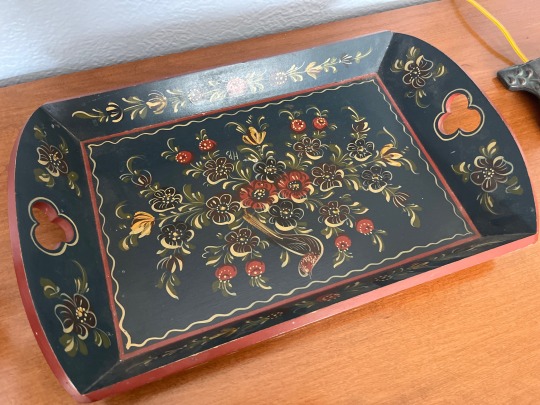
In 2020, I was given my poor little lathe practically at the same moment as a friend was given a poor old (1921ish) Singer sewing machine and table we slaved for a while to restore. Adoptive siblings, those machines. Last year (that is, 2021) I got a wild hair and up-gunned the lathe with a servomotor intended for industrial sewing machines. Knowing I’d need to repaint it eventually, I considered hand-detailing over black lacquer like an old Singer, but realized that would require creativity and craft. Nah. I further realized a common base color in the Hindeloopen style is similar to RAL 6011 (if darker on average, but always with 6011-friendly accents in gold and/or powder blue and/or brownish), which I thought would be a very silly visual pun. See below.

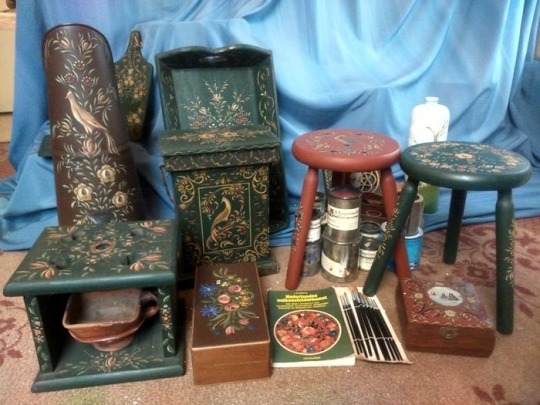
When I rebuilt the spindle and headstock a couple weeks back, I found the closest match I could obtain quickly and cheaply. Currently only the headstock bears the new paint, but I’ll recoat the rest as agrees with more urgent projects. See below.

I have several other priorities with the machine overhaul — custom headstock hardware, finishing the solid toolpost riser that’s sitting in the chuck in the picture there, metal handwheels for the carriage and tailstock, etc. and so on ad nauseum — but eventually it will be all dressed up like a piece of Hindeloopen furniture. Only I, my dad, and about seven other people alive (plus I guess you, reader) will get the reference, but when the hell have I ever bothered with appealing to people with my obscurities?
I’ll need some practice painting the motifs and guidance with drafting custom spreads, though, which is why this is counting toward UWLS’ tally. For a couple months now I’ve been scouring eBay and similar for old craft magazines that fit the bill. Luckily my grandmother was far from the only sucker that bought into yet another clever Dutch ploy targeted at foreigners looking for quaint whatsits, so I’ve hit on a minor but distinct, if extinct, publishing niche. So far my collection comes to two (2) items. See below.
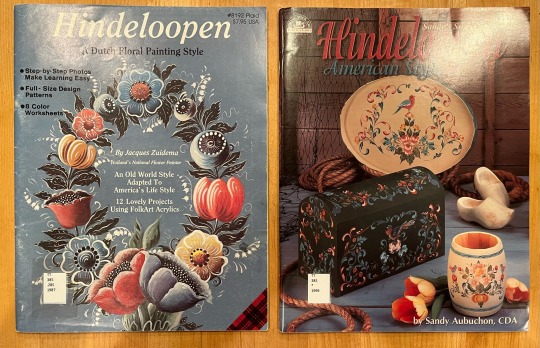


I need more. I also need to practice a lot. I also also need to experiment with layering acrylics over the alkyd enamel I’m using on the lathe, and with topcoating the whole deal to ward against oil and solvents. Much to do, but we’re getting there. When I inevitably die in some kind of slapstick labelmaker incident, good luck fighting over these gems.
56 notes
·
View notes
Text


Gown, 18th century
Chintz dresses of this cut were worn in Hindeloopen in northern Holland, although they were usually made of more colourful chintz fabric. This monochrome type was probably intended as mourning wear. The design is taken from a French woven silk pattern of the early 18th century.
[Photos and text from the Victoria & Albert Museum, accession number IS.18-1950]
2 notes
·
View notes
Photo

#roosje hindeloopen#hindeloopen#folklore#folk art#dutch culture#the netherlands#fryslân#friesland#farmcore#warmcore#cottagecore
149 notes
·
View notes
Photo

Frisian Woman * - Friedrich Kallmorgen, 1910
German, 1856-1924
Oil on canvas, 51 x 40 cm.
* Old mother with a coffee cup in her living room in Hindeloopen at the IJsselmeer.
#Friedrich Kallmorgen#german artist#woman portrait#Frisian Woman#black cat#morning coffee#frisian interior scene#Frisland#Friesland#old woman
105 notes
·
View notes
Text
It's really interesting to see the differences in Dutch traditional clothing. For example, Hindeloopen (left) and Leeuwarden (right) here. Both are places in the province of Friesland, but the traditional clothes are completely different.
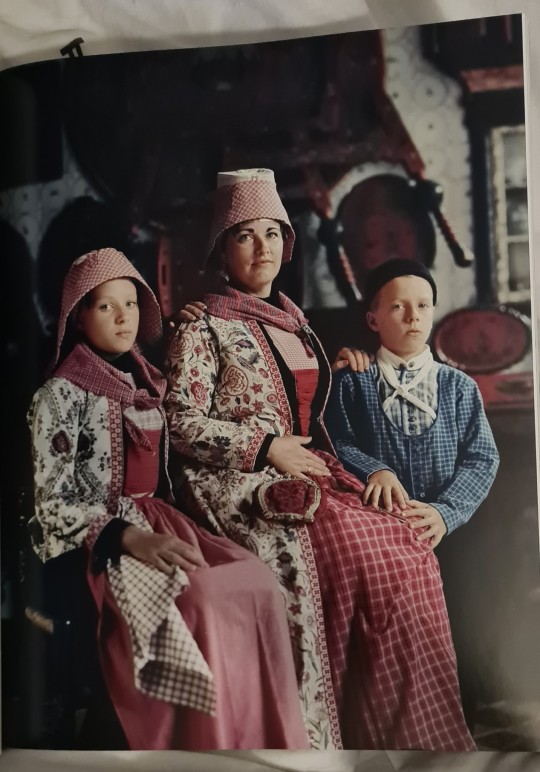
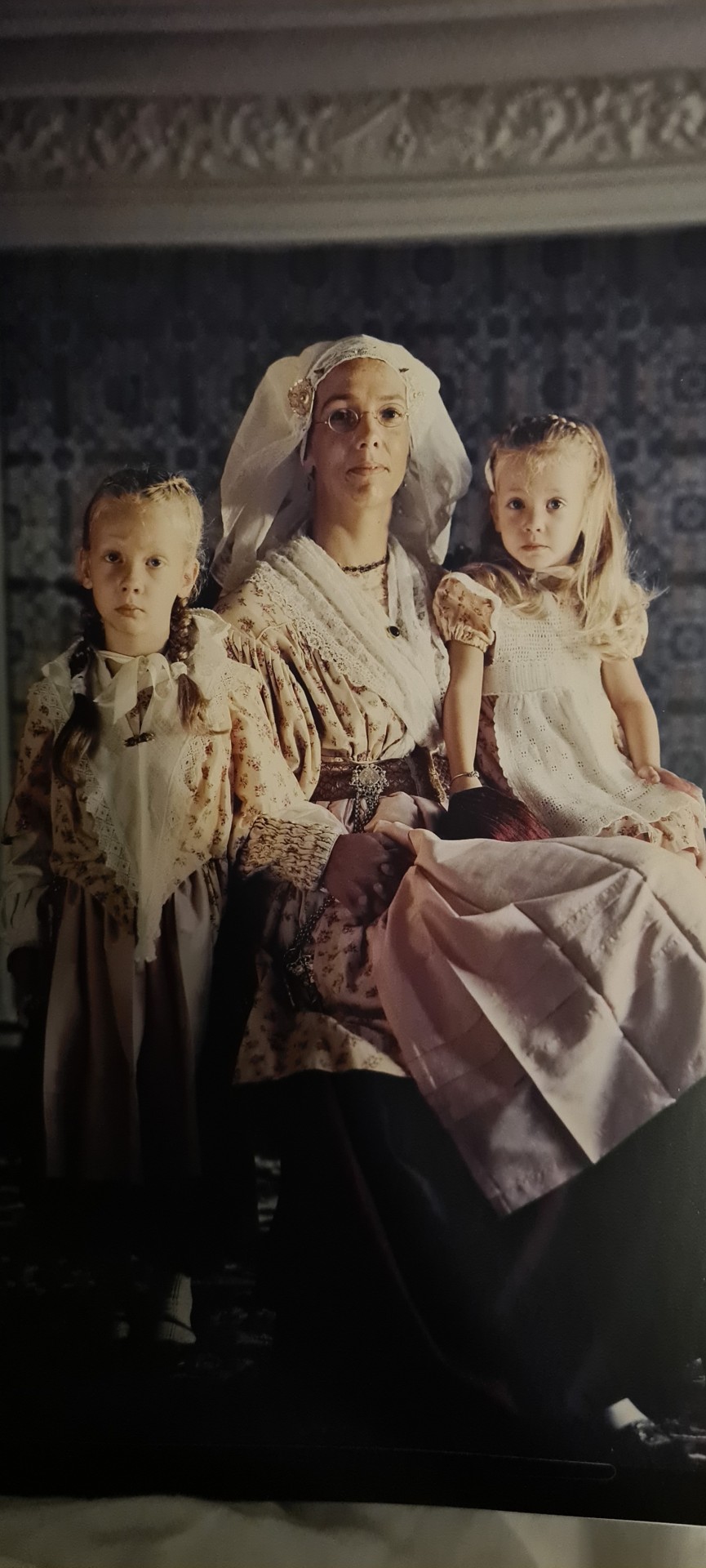
18 notes
·
View notes
Note
Hallo Yoïn, zou je ook zo'n mooie mindmap/woordboom van de volgende woorden willen maken: hart, haard en het Engelse hart (male stag)? Groet, Emiel Amsterdam uit Hindeloopen
Hoi Emiel, dat is een goed idee! Het leuke is dat 'hart' vroeger de nevenvorm 'hert' had (vgl. Duits 'Herz') en 'hert' juist de nevenvorm 'hart' (vgl. Engels 'hart'). 'Haard' past wel weer wat lastiger in dat plaatje, omdat ik me afvraag of er wel mensen zijn die ervan op zullen kijken dat het niet met de andere twee woorden verwant is. Het werkt naar mijn ervaring mij namelijk het best om óf verwante woorden te pakken die mensen niet met elkaar associëren (zoals 'draaien' en 'to throw') óf woorden die niet verwant zijn maar toch zo op elkaar lijken dat mensen verbaasd zijn dat er geen link is. Afijn, wie weet maak ik de infographic nog wel op heel korte termijn! Bedankt!
3 notes
·
View notes
Text
.
I'll be roadtripping through flanders for a week. we'll be staying in bruges, antwerp and hindeloopen (not flanders, I know). anyone from around that area who would care to share some favourite spots that shouldn't be missed? =)
1 note
·
View note